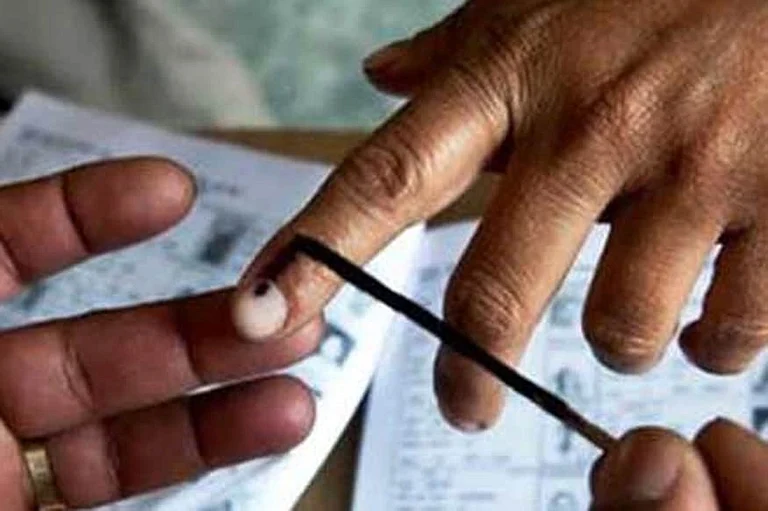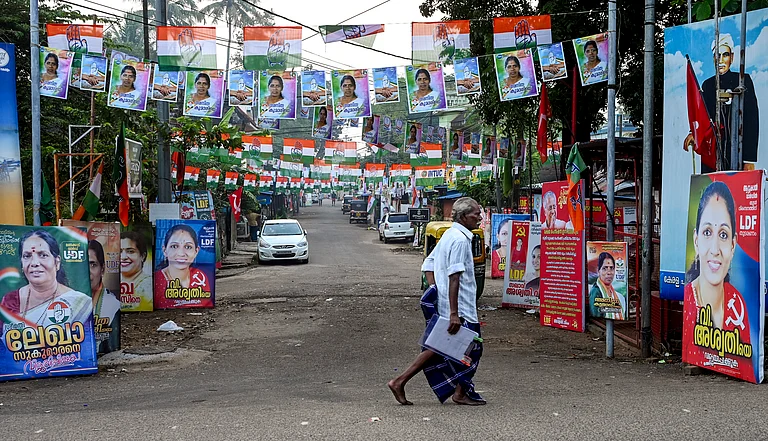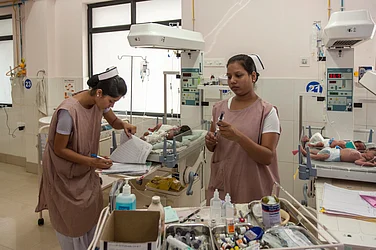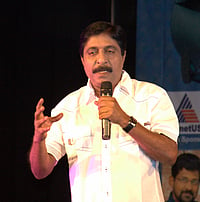
CPIM’s outreach to Hindu caste groups marks a paradigm shift in Kerala politics.
BJP has been consistently increasing its vote share among the Hindu voters.
Another term at the opposition will make Congress’s survival difficult in the state, paving the way for the saffron surge.
Those familiar with Deng Xiaoping’s famous axiom — that the colour of the cat does not matter as long as it catches mice — would not be surprised by India’s only Marxist chief minister, Pinarayi Vijayan, and his volte-face on issues of renaissance and caste politics. At the Global Ayyappa Summit, his eloquent invocation of the Bhagavad Gita and reflections on the virtues of a ‘true devotee’ turned many critics into admirers. Simultaneously, the open support extended by influential Hindu caste groups, like the Nair Service Society(NSS) and the Sree Narayana Dharma Paripalanayogam (SNDP), to the CPI(M) government has left the Congress-led UDF, which is struggling to stage a comeback in the 2026 elections, in an increasingly precarious position.
The Congress is scrambling to regain the confidence of estranged community groups with a mix of conciliatory gestures and careful words. For decades, the Congress-led UDF had relied on caste and religious outfits to maintain its electoral dominance. But with the NSS and SNDP taking an adversarial stand, the UDF — in which the Indian Union Muslim League is a key pillar — now finds itself battling the perception that it is essentially a pro-Muslim formation.
Political scientists tell Outlook that the Left’s outreach to Hindu community groups, and Chief Minister Vijayan’s appeasement, may shift Kerala’s political scene. They note that the Left changed course after a poor 2019 Lok Sabha election but acted decisively when a Left minister publicly read a letter from UP Chief Minister Yogi Adityanath, which was interpreted as praise for Kerala’s support of Hindu devotees.
The Left’s traditional vote base, particularly among the Ezhava/Thiyya community, has eroded in recent elections, with many shifting towards the BJP following the Sabarimala verdict.
The Global Ayyappa Sangamam was not merely a religious congregation, but a calculated political intervention by the Left government aimed at winning back Hindu voters, particularly following the backlash over its handling of the Sabarimala verdict. Based on the reactions of various caste-based community organisations, the move appears to have achieved its clandestine objective. The NSS, which for decades has been staunchly anti-communist and even spearheaded the ‘liberation struggle’ that unseated the first EMS government led by Namboodiripad, publicly praised the Pinarayi Vijayan administration for its resolve to uphold Hindu rituals and traditions.
The CPIM, which had criticised the self-styled godwoman Amrithanadamayi for spreading Hindutva ideas, has now sent a minister for her birthday celebrations who eloquently praised and garlanded her.
Observers note that the CPI(M) now openly engages caste and religious groups, reflecting a pragmatic realignment after losses among the Ezhava/Thiyya community. By foregrounding events like the Ayyappa Sangamam and using Hindu symbols, the government aims to reclaim credibility among estranged Hindu groups and counter the BJP’s narrative of defending faith.
Political scientists argue that Kerala’s political landscape is undergoing a shift. The UDF, long dependent on caste and religious organisations, now faces increased competition as the Left accommodates these groups. The BJP’s space may shrink if CPI(M) consolidates this base.
Nissim Mannuthakkaran, Professor, Department of International Development Studies, Dalhousie University, Canada, told Outlook that“ A Left minister read out at the summit a letter from Adityanath, who stands against everything that a secular and democratic Kerala represents, is a staggering comment on the decline of the Left as a radical force. The Left thinks it might win a few votes with its latest political strategies, but what it does not realise is that it has already ceded ground on the rapid saffronisation of society and culture, and that the deep roots that Hindutva forces have struck in Kerala society, even without electoral strength, are now rearing their heads and making even making the Left speak their language.”
One scholar has noted that the BJP has been making significant inroads among Hindu voters, particularly from the upper castes. Based on the voting patterns in the 2019 Lok Sabha election, P.K. Yassar Arafat, an associate professor at the University of Delhi, wrote that the BJP/NDA has consistently expanded its base among the Hindu community. He pointed out that while the BJP/NDA secured just 11 per cent of Hindu votes in 2009, the share rose to 19 per cent in 2014. By 2019, according to his study, the BJP/NDA drew around 32 lakh votes out of 1.1 crore Hindu voters in Kerala—roughly 34 per cent.
The CPI(M) denies changing its position. State secretary M.V. Govindan said the party always supported devotees and called the Sabarimala controversy a 'closed chapter.'
“The shifting of positions, in a way, reflects a democratic deficit in society,” observes political scientist Dr J. Prabhash. “The 2026 election will be a game-changer for Kerala. The Left is fighting to retain power, while Congress faces a survival crisis if confined to the opposition for another term. In such a scenario, the BJP stands to gain. The CPI(M)’s outreach to Hindu community groups has to be read in this context.”
P.K. Yassar Arafat told Outlook this recalibration links to the Pinarayi Vijayan government’s weak record in education, healthcare, and policing. To compensate, the CPI(M) is building support among Hindu caste groups. Arafat says groups like NSS have few disagreements with the government; they largely agree on issues like the EWS quota and no caste census.
The 2021 assembly election's return of an incumbent underlined Kerala's unique political momentum. For a nationally embattled Left, Kerala is no longer just a stronghold—it is the party’s last resort. Forced pragmatism has led CPI(M) to alliances it once abhorred. The ultimate test of this strategic gamble will be evident in whether pragmatism reasserts the Left's dominance or inadvertently enables the BJP’s ascendancy. Kerala stands on the threshold of a political transformation, with consequences that extend far beyond its borders.



























